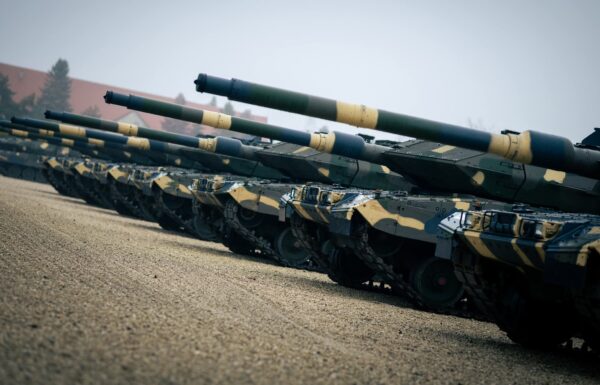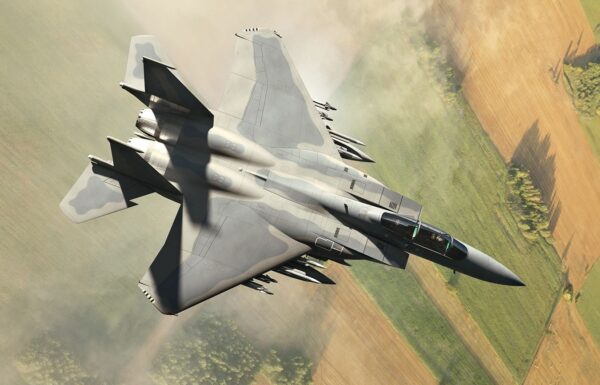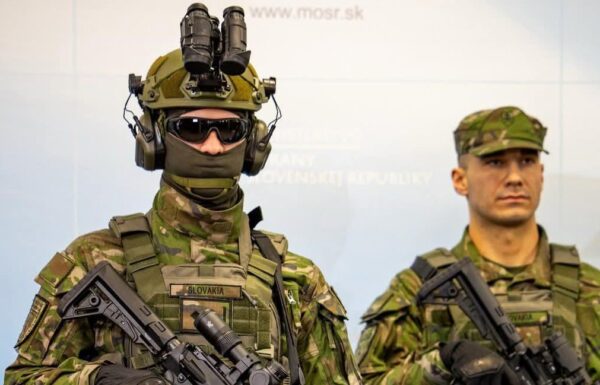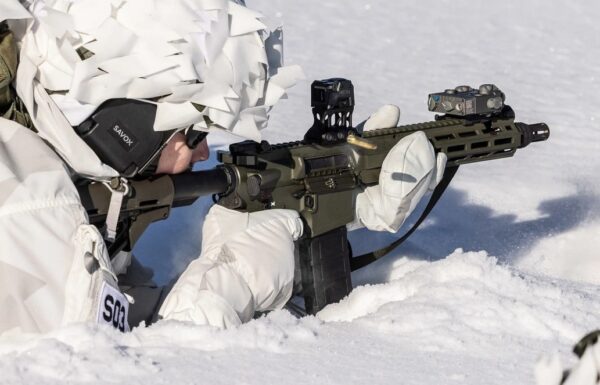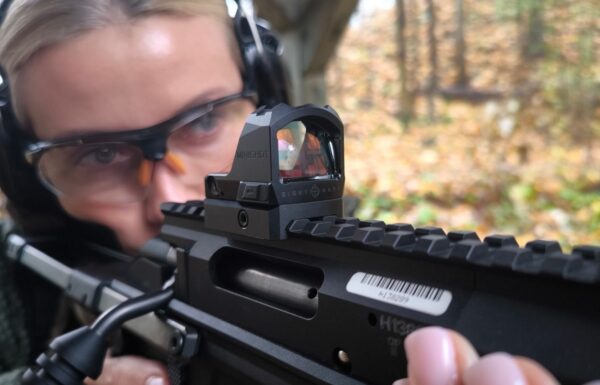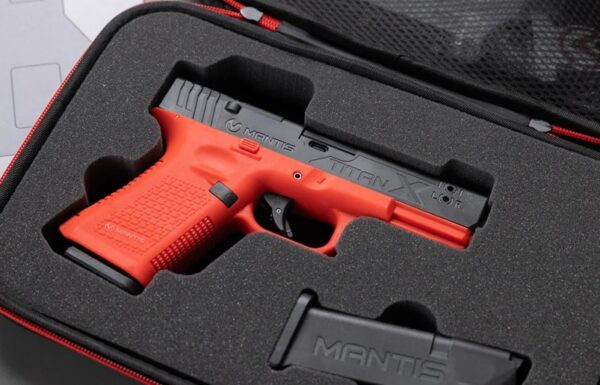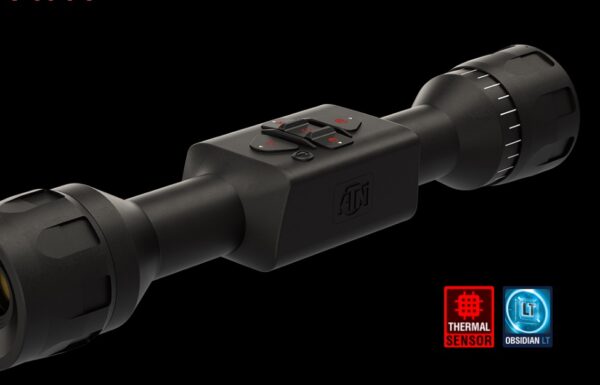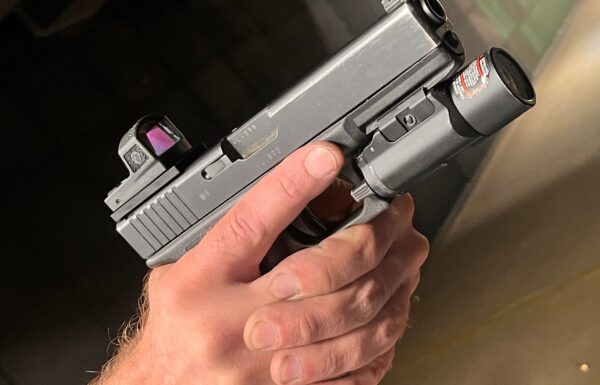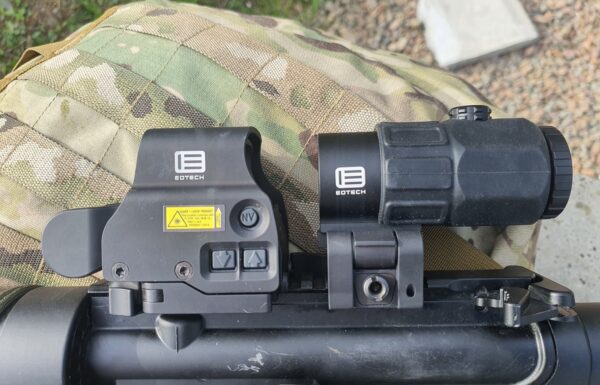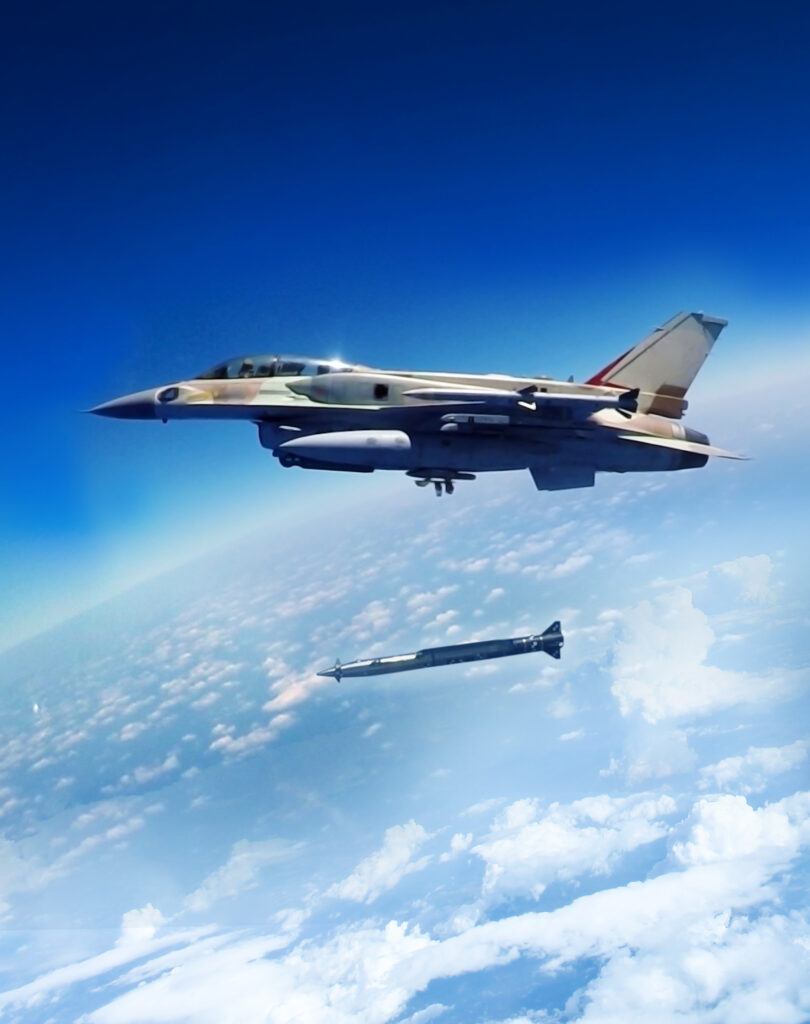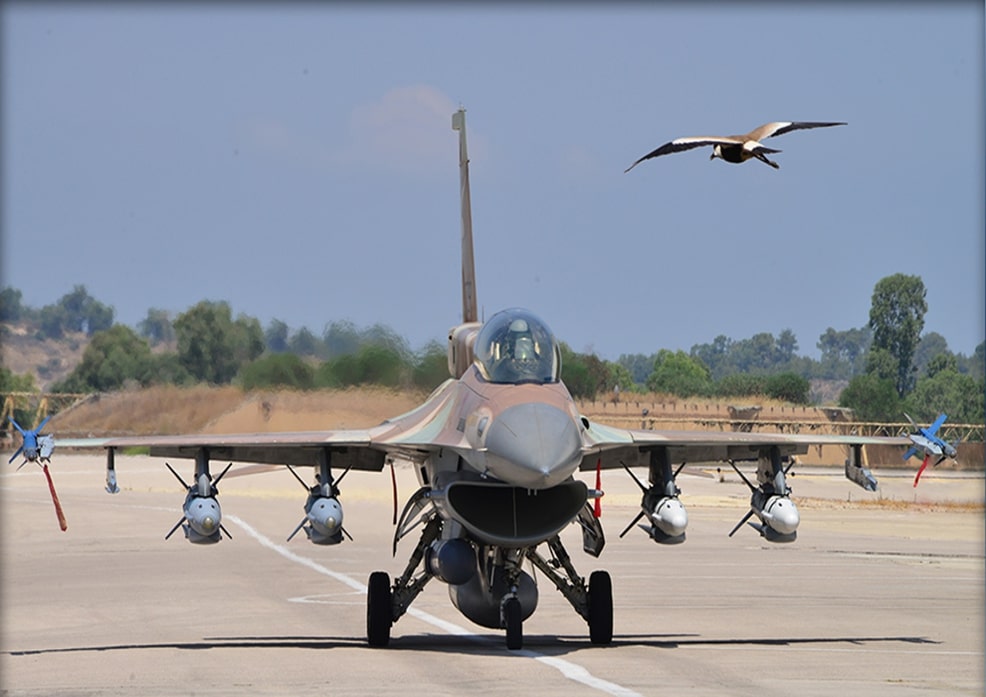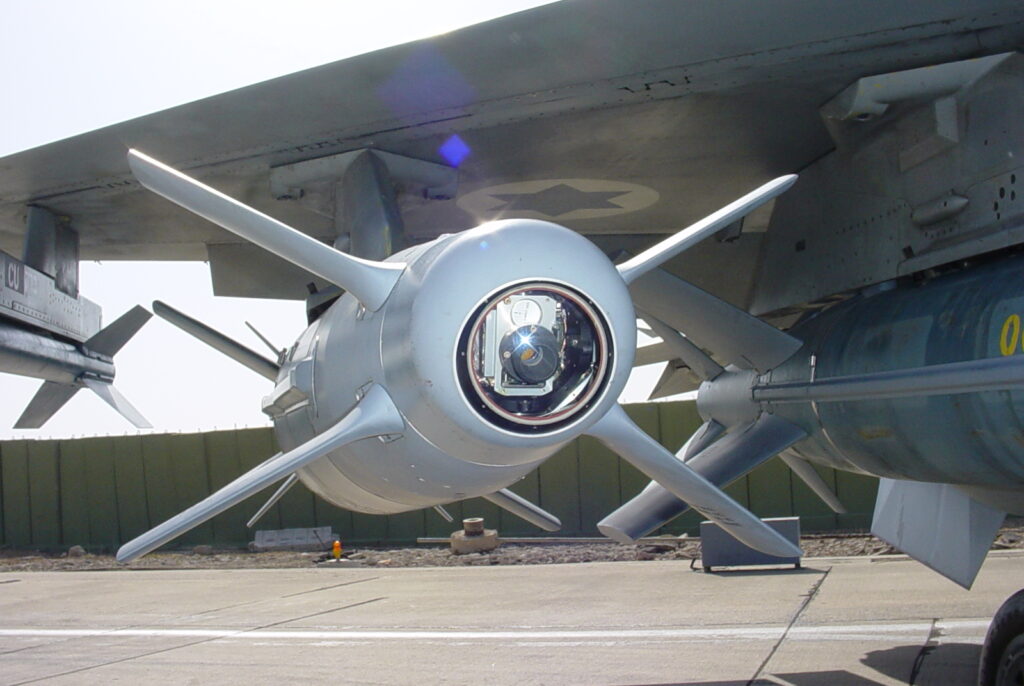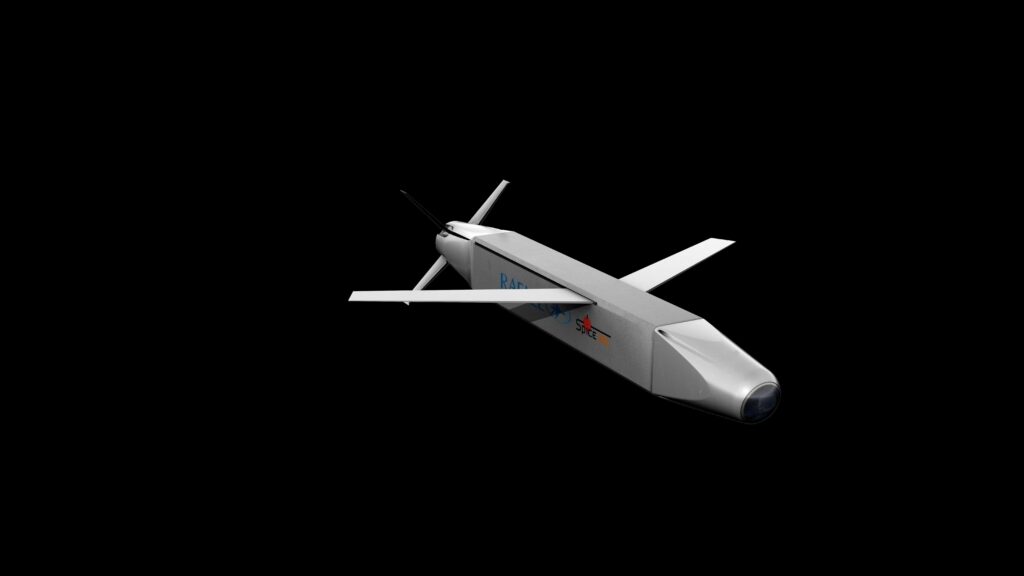Since the beginning of 2020 more and more “Phantom” attacks are reported by the Syrian press. Israel has changed its policy and has stopped taking responsibility for such operations. But the finger is still pointed at Israel.
The country has declared time after time, that it will do “whatever is necessary” to foil the Iranian effort to equip the Hezbollah, its proxy in Lebanon, with accurate rocket systems.
One thing is sure – Israel has real time intelligence about the flow of the shipment from Iran to Lebanon via Syria. But real time intelligence is only part of the solution to this problem.
Russian presence changes the game
The delicate situation in which Israel has to act more extensively against Iranian operations in Syria, while the Russians are operating some of this country’s air-and-missile defense systems, forces Israel to use more standoff accurate weapon systems.
In recent talks between Russian president Vladimir Putin and Israeli prime minister Benjamin Netanyahu the Kremlin made it clear that Israel will have to be very “selective” when attacking targets in Syria while Russians are there in big numbers.
The S-300 air-and-missile defense system, which was delivered to Syria in late 2019, has already reached an operational status. However, although the Syrian military personnel has been trained on how to operate the advanced SAM system, Russian personnel is still present at the site of S-300 dislocation.
Israeli sources told MILMAG Defense&Space that this puts Israel in a very sensitive position “On one hand it is clear that Israel will not allow Iran upgrading the Iranian made missiles operated by the Hezbollah and on the other it has to be very careful not to scratch a Russian”
Air raids continue
The Israeli Air Force continues air raids against targets in Syria and Lebanon, which might pose a threat to country’s security and safety of its citizens. Air defense systems in Syria and Lebanon usually do not even detect any approaching threat. Unidentified Israeli aircraft enter the air space of these two countries and hit selected targets with very accurate weapon systems.
According to the Lebanese press these ‘phantom’ attacks are the outcome of a massive Israeli intelligence effort to uncover the transfers of weapons from Iran via Syria to the Hezbollah in Lebanon. Most of weapons supplied to Hezbollah were of Iranian origin. Deliveries include Scud tactical ballistic missile systems and Fateh-110 surface-to-surface missile systems which give Hezbollah the ability to hit almost any target in Israel.
The path of Iranian supplied weapon systems is twisted. Rockets and missiles are flown to Syria and transferred to warehouses on Syrian soil controlled by the Hezbollah. From there they are transferred to Lebanon. These transports are often followed by Israel, which has the ability to react at the right moment, destroying them and eliminating the threat which they pose.
Since the beginning of 2020 Israeli air raids continue and have even intensified. Interestingly, Israel does not take responsibility for such actions, but at the same time does not deny them.
Advanced weapon systems required
In order to continue air raids on Syrian and Lebanon positions Israeli Air Force requires more advanced standoff weapon systems, which the local defence industry is working to supply. IAF’s requirement stems from the operational problem of attacking high quality targets in areas protected by a variety of surface-to-air missile systems.
According to foreign sources, the IAF has performed many air strikes in Syria while flying in the Lebanese airspace. Lebanon has no air defence systems that can threaten the IAF aircraft. According to Russian news outlets some of the recent air strikes in Syria involved the use of the new Israeli Rampage air-ground missile, which was developed jointly by Israeli Military Industries Systems (IMI), recently acquired by Elbit systems and Israel Aerospace Industries (IAI).
According to the companies, the Rampage warhead, rocket and advanced navigation suit, allow execution of the assault mission of high quality, well-protected targets with utmost precision.
The Israeli companies say that Rampage features optimal penetration capability into protected areas. Its focal precision prevents collateral damage at a very low mission cost compared with existing solutions. The targets that best fit the capabilities of the new rocket include communication and command centers, air forces bases, maintenance centers, infrastructures and valuable field targets protected by anti-air systems. The Rampage can operate in any weather conditions, as well as day and night. The total weight of the missile is 570 kg and is 4.7 meters long.
More effective weapon systems
According to foreign sources many of the IAF attacks on targets in Syria and recently in Iraq were executed from standoff ranges. There are two main unclassified standoff weapon systems that are capable of performing precision strikes.
In recent weeks attacks continued and even intensified. Without really knowing who performed each of the attacks, one fact is clear – the IAF is equipped with a large variety of weapon systems that enable a maximum flexibility in the performance of missions, even under the most harsh conditions.
One weapon system, or rather family of weapons used by the IAF is the Rafael Spice family of smart bombs. The Rafael Spice 1000 and Spice 2000 guidance kits convert 1000 lb. and 2000 lb. general purpose and penetration warheads into precision stand-off strike weapons.
The Spice-1000 kit for 1000 lb. general purpose or penetration warheads, such as MK-83 and RAP1000, has a stand-off range of 100 kilometers, whereas Spice-2000 kit for 2000 lb. general purpose or penetration warheads, such as MK-84, RAP2000 and BLU-109, has a stand-off range of 60 kilometers.
According to Gideon Weiss, deputy general manager, marketing and business development, of Rafael’s air and c4ISR systems division, mission planning for the Spice family members is performed in the air or on the ground and uses target data like target coordinates, impact angle and azimuth, imagery and topographical data in order to create a mission for each target.
As the weapon approaches the target, Spice’s scene matching algorithm compares the electro-optical image received in real-time via the weapon seeker with mission reference data stored in the weapon computer memory, and adjusts the flight path accordingly.
In the homing phase, after successful completion of the scene-matching process, Spice acquires the target automatically. The weapon homes in accurately and autonomously to the exact target location in the pre-defined impact angle and azimuth.
Spice is combat-proven in the Israeli Air Force and is in service with leading air forces throughout the world. The weapon system is easily integrated with a number of multirole fighter aircraft, F-15, F-16, F-18, Tornado, Mirage, Rafale, Gripen and Eurofighter.
The Spice bombs use a common aircraft interface and sophisticated weapon software simplify the effort needed for aircraft integration.
Spice has day, night and adverse weather capabilities, based on its dual CCD/IIR seeker. The Automatic Target Acquisition capability is implemented by a unique scene-matching technology that according to the company’s official, is robust to scenery changes and produces a CEP of less than 3 meters.
According to Weiss the big demand for the Spice -250 keeps the production line “very busy”. “We market the system as a multi task weapon that can replace different types of bombs and missiles carried by a fighter aircraft”. IAF was the first customer of Spice-250 weapon system.
The new version of this advanced air-ground weapon system enables a very short sensor to shooter time. Unlike the previous members of the Spice family that came in the kit form that was attached to 1000 and 2000 pounds bombs, this time the Israeli company is supplying a complete system. “There are no warheads that we could use and therefore we developed the full system, the guidance kit and the warhead or warheads”
Rafael’s Spice 250 is equipped with GPS/INS Satellite/Inertial Navigation system. The INS is used both as an Inertial Measurement Unit (IMU) and as a sensor device for weapon angular position and motion. The GPS receiver serves as a backup for the INS and reduces drift by including GPS inputs in navigation calculations.
But the main sensor of the Spice is the CCD/IIR dual seeker that provides pinpoint accuracy and positive target identification and according to Rafael, overcomes target location error and GPS jamming.
According to Rafael, Spice 250 achieves an extended standoff range of up to 100 kilometers using its deployable wings. It enables impact point update after release, using its communication module. In addition, it provides Battle Damage Indication (BDI) capability, by transmitting the target image just before hit.
The Israeli company says that these capabilities, along with airborne Mission Planning, provide a comprehensive solution for Time-Sensitive-Targets, land moving and maritime targets.
While approaching the target, Spice 250 scene-matching algorithm compares the electro-optical image received in real time via the weapon seeker with mission reference data stored in the weapon computer memory.
To load the Spice 250 on an F-16 a special Rafael Smart-Quad-Rack (SQR) is attached to aircraft’s pylons. Each such rack is loaded with 4 Spice 250. An F-15 fighter aircraft can carry 28 bombs of this type. “This allows each aircraft to handle multiple targets,” Weiss said.
“The Spice enables an air forces to engage pixel-size targets from standoff ranges, with a weapon designed for high immunity to interference and countermeasures,” Weiss added.
International cooperation
Last year Rafael Advanced Defense Systems and Lockheed Martin signed a cooperation agreement to develop, market, manufacture and support the Israeli company’s Spice smart bombs. According to Weiss, the “Americanization” of the Spice bombs will allow Lockheed Martin to offer it to its customers.
He explained that the U.S Air Force is also a potential customer. “Now the Americans use the high end weapons systems like the AGM-158 air launched cruise missile and the low end systems, like the Paveway LGB bombs. These require a laser designator to illuminate the target. In the gap between those two types of weapon systems Spice is a very good solution,” Rafael’s executive said.
Weiss added that the image matching algorithm used by Spice family of weapon systems has been developed over the past 20 years and therefore is a mature solution. “It solves not only the end game of the bomb but the entire flight towards the target”.
He said the Spice is not using the image matching algorithm “in its entire flight, but well before getting to the area where the target is located.”
Constant upgrade
The Spice family of smart weapon systems is constantly upgraded. Recently Rafael has successfully tested and demonstrated a new ATR (Automatic Target Recognition) capability for its Spice-250 air-to-surface munition.
According to the manufacturer this new ATR capability is part of Spice-250’s array of technologies which also includes Automatic Target Acquisition (ATA) and Moving-Target-Detection homing modes, all of which are based on autonomous electro-optic Scene-Matching Algorithms.
“A specific target, like a moving vehicle, can be put into a special algorithm and it will look for the matching pixels and bring the weapon system to hit it with absolute accuracy.”
The newly-unveiled ATR feature is a technological breakthrough, enabling Spice-250 to effectively learn the specific target characteristics ahead of the strike, using advanced AI and deep-learning technologies.
During flight the pilot selects the target type to be attacked and allocates a target to each weapon. Than the munition is launched towards the vicinity of the target, using its INS for initial navigation. When approaching the target area, it uses the ATR mode for detection and recognition of the targets. Each weapon homes-in on the pre-defined target, either autonomously or with a human-in-the-loop, aided by the ATR algorithm.
Recent reports in the Russian press claim that the Russian made S-300 air defence system is largely ineffective against Israeli air strikes. Israeli sources were reluctant to comment and just said that the IAF “has ways of attacking any type of target in the area”.
Rafael’s new weapon system
Rafael has recently unveiled another heavy standoff weapon system – the Rocks. This extended range weapon has a total weight of 1.3 tons
The missile is equipped with a rocket engine that is ignited after it is released from the aircraft and brings the system to hyper sonic speeds. It also features a target acquisition algorithm and scene matching capability. Weiss told MILMAG Defense&Space that the Rocks will be operational shortly.
In result of constant design and development works conducted by Rafael and other Israeli defense companies country’s armed forces are getting more and more options for standoff operations that are crucial under the current situation and may solve many problems in future combat scenarios.
Article previously published on MILMAG 02/2020


